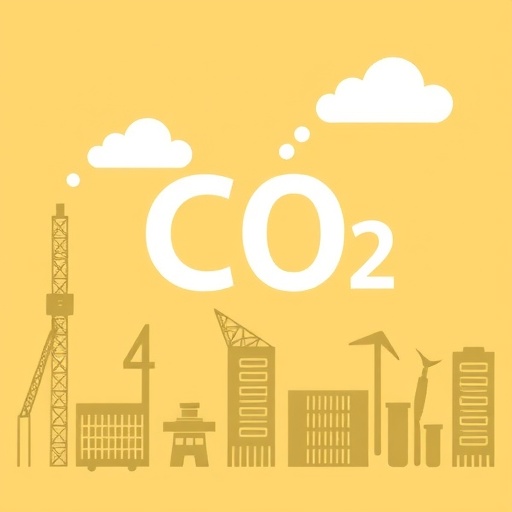In recent years, carbon dioxide (CO2) emissions have emerged as a central challenge in global environmental sustainability. Rising levels of CO2, primarily from burning fossil fuels, have been linked to severe climate change consequences. As scientists and policymakers scramble to mitigate these effects, a compelling strategy has surfaced: carbon capture and utilization (CCU). This innovative approach not only aims to curb greenhouse gas emissions but also seeks to transform CO2 into valuable products, effectively turning a liability into an asset.
The process of carbon capture involves the capture of CO2 from sources like power plants and industrial facilities before it can enter the atmosphere. Several technologies have been developed to achieve this goal, including pre-combustion capture, post-combustion capture, and oxy-fuel combustion. Each of these methods has its unique advantages and challenges, and researchers are constantly refining them to enhance efficiency and reduce costs. The captured carbon dioxide does not simply disappear; instead, it becomes the raw material for various applications, which brings us to the second part of the equation: utilization.
Once captured, CO2 can be utilized in numerous ways. One of the most promising applications is in the production of fuels. Through several chemical reactions, CO2 can be converted into hydrocarbons, which can serve as renewable alternatives to fossil fuels. This conversion process may involve electrochemical reduction techniques or biochemical processes using specific organisms that thrive on CO2. By achieving this transformation, we can not only reduce our dependence on fossil fuels but also create sustainable energy sources that are vital for the future.
Furthermore, CO2 can be used in the production of chemicals, including methanol and urea, which are foundational building blocks in various chemical industries. Methanol, in particular, holds potential as a versatile solvent and can be further processed into more complex substances. This aspect of carbon utilization aligns beautifully with circular economy principles, where waste products are transformed into valuable resources. Scientists are exploring catalysts designed to improve the efficiency of these conversion processes, enabling the commercial viability of such technologies.
In addition to fuels and chemicals, carbon dioxide is making strides in the realm of building materials. Researchers are investigating the potential for using captured CO2 in producing concrete and other construction materials. This has a dual benefit: it not only sequesters CO2 during the curing process but also enhances the properties of the materials being produced. By integrating CO2 into the construction sector, we can effectively reduce the carbon footprint associated with traditional building practices, all while creating resilient and high-performance materials.
The economic implications of carbon capture and utilization are substantial. As industries move towards adopting CCU technologies, there is potential for the development of new markets that prioritize sustainability. Investing in these technologies could result in the creation of jobs and stimulate economic growth in sectors focused on environmental technologies. The shift towards greener practices is not merely ethical or ecological; it also presents numerous opportunities for innovation and commercial success.
However, challenges remain that could hinder widespread adoption of CCU technologies. The initial capital investment for developing carbon capture systems and establishing utilization pathways can be daunting. Furthermore, the energy requirements associated with these processes necessitate careful consideration to ensure that the environmental benefits outweigh the costs. Policymakers will need to provide incentives and regulatory frameworks that encourage industries to invest in these technologies while facilitating their integration into existing operational infrastructures.
Public perception plays a vital role in the success of carbon capture and utilization endeavors. Ongoing education and outreach are crucial to inform the public about the benefits of CCU technologies. By fostering a better understanding of how CO2 can be repurposed into valuable products, we can achieve greater societal acceptance and encourage collaborative efforts across various sectors. Engaging local communities and stakeholders will be important to ensure that the deployment of these technologies aligns with public interests and environmental justice.
As research continues, the enthusiasm surrounding carbon capture and utilization is palpable. Scientists and innovators are investigating various methodologies and applications, aiming to pioneer solutions that can address the unique challenges posed by CO2 emissions. Each breakthrough brings us a step closer to realizing the full potential of CCU systems, contributing to global efforts to mitigate climate change and promote energy sustainability.
The collaboration between academic institutions, governmental bodies, and private enterprises is fundamental to advancing carbon capture and utilization technologies. By pooling resources and expertise, various stakeholders can work together to enhance efficiency, reduce costs, and increase the overall accessibility of these innovations. This collaborative spirit is essential to foster a culture of innovation that drives sustainable progress.
In conclusion, the quest to combat climate change through carbon capture and utilization heralds an era in which CO2 can be transformed from a detrimental greenhouse gas into valuable resources. While challenges persist, the opportunities and benefits presented by CCU technologies are promising. As the scientific and engineering communities continue to advance this critical area of research, we move closer to a future where economic, environmental, and social imperatives come together to pave the way for sustainable growth.
In light of these advancements, the future looks promising for carbon capture and utilization. With continued investment, innovation, and collaboration, there is hope that not only will we reduce CO2 emissions significantly but also convert them into valuable resources that can power our economies sustainably. The journey towards a carbon-neutral future is ongoing, and with transformative ideas and technologies, we are well on our way to a more sustainable and resilient world.
Subject of Research: Carbon capture and utilization for turning CO2 into valuable products.
Article Title: Carbon capture and utilization—turning CO2 into valuable products.
Article References:
Arya, R.K., Pant, K.K., Verros, G.D. et al. Carbon capture and utilization—turning CO2 into valuable products.
Environ Sci Pollut Res (2025). https://doi.org/10.1007/s11356-025-36995-z
Image Credits: AI Generated
DOI:
Keywords: Carbon capture, carbon utilization, CO2 emissions, climate change, sustainable energy, renewable resources, environmental technologies, innovation, sustainability.




